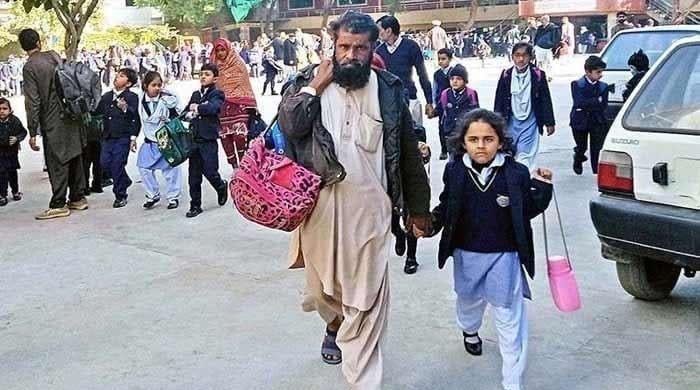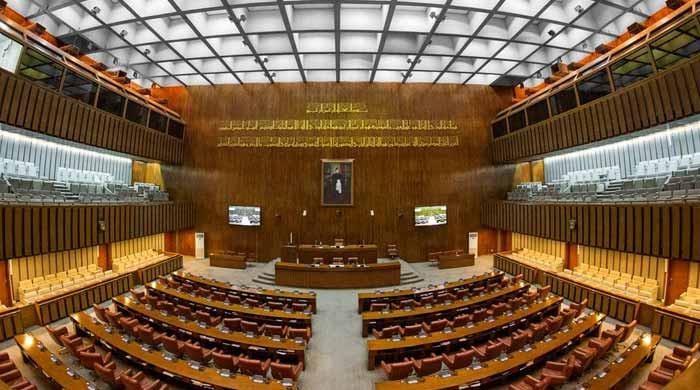Domestic violence during pandemic in Pakistan: How victims can stay safe
In Pakistan, approximately, every one in four women has experienced some form of abuse
May 16, 2020

COVID-19 has disrupted our lives in extraordinary ways; nothing has killed humans more than this infectious diseases. The last pandemic that struck the world was the Spanish Flu in 1918, infecting approximately a third of the world’s population, almost 500 million people.
To date, coronavirus has infected over four million people globally and over 38,000 people in Pakistan. Understandably, Pakistan has limited experience in dealing with a pandemic of this magnitude in its 72-year-old history.
A double pandemic
This crisis has deepened the economic and gender-based inequalities, making millions of women and children vulnerable and at a heightened risk of violence around the world. Many countries have reported a significant surge in domestic violence during lockdown.
Thus, the measures being taken to slow the spread of the disease, such as social distancing and the national lockdowns, are likely creating conducive environments for yet another global public health emergency: the escalating rates of domestic and gender-based violence incidents.
Increase in violence against women has often been reported in crisis situations, as we learnt from the Ebola outbreak in 2018.
However, amidst COVID-19, stay-at-home orders are proving more dangerous for women and girls who are now being trapped with their abusers, isolated from people and resources that can support them during the pandemic.
Unfortunately, in these cases, home is not a safe place to be.
Domestic and gender-based violence was the top threat to women’s empowerment, even before the COVID-19 emergency, affecting approximately 243 million women and girls aged 15-49 years worldwide.
In Pakistan, approximately, every one in four women has experienced some form of abuse ranging from emotional, physical, or sexual violence. This adds to roughly eight million women facing some form of violence every year in the country.
According to the World Health Organization (WHO), in almost one third of these cases, the perpetrator is an intimate partner or someone known.
Gender Inequalities
Women with low education and low-income status are at increased risk of violence. Early marriages are also associated with greater risk of domestic violence especially in rural areas of Pakistan. These women often have low social status and lack of awareness about their legal rights which makes them particularly vulnerable.
The root-cause of gender related inequalities lie in the ways men and women’s roles are prescribed in the society. Gender roles circumscribe women to their homes and relegate them to the realm of domestic chores and household work. This includes household tasks such as cooking, washing, cleaning as well as taking care of children, sick family members, and the elderly.
These days, due to work-at-home orders and school closures, women are more likely to give up their jobs or choose part-time work to take care of the children or the elderly, so that the men can continue to work. This situation is going to further put women under financial control of their spouse.
Furthermore, loss of jobs, reduced work patterns and work-from-home scenarios has likely resulted in loss of power for some people, which may be causing an increase in abusive and violent behaviors at home.
According to a Harvard University expert, Judith Lewis Herman, the coercive methods adopted by domestic abusers to control their partners “bear an uncanny resemblance” to those that kidnappers use to control their hostages. Control behavior is not always in the form of physical violence. Other common tools of abuse include isolation from friends, family, and employment; constant surveillance; financial control; strict, detailed rules for behavior; and restrictions on access to such necessities as food, clothing, and sanitary facilities.
Social distancing and social isolation strategies are vital to combat COVID-19, but they are at the same time giving more power to the abusers and perpetrators of gender-based violence.
There may be fear among women to reach out for help as they are being constantly monitored at home. Fear to reach out to health services or friends may also be due to anxiety of contracting the virus. As most of the legal services have also shifted to remote work, it is likely going to cause delays in processing of cases and seeking help.
Amidst COVID-19, finding an avenue for escape or a new home is extremely difficult, which may be forcing many victims to stay with their abusers without reporting.
Applying a gender lens in policy
The COVID-19 pandemic is exposing gender gaps in society as well as in policymaking.
The lack of prioritization of gender-based violence issues is alarming. The funding allocation is minimal and there seems to be a lack of adequate services for survivors. With an already strained health system the needs of half the population in Pakistan is not being met. These issues will have long term economic and social repercussions and require urgent intervention and prioritization by the government. Let us not make our policies gender blind.
Solutions
We propose adopting a gender-responsive strategy to combat COVID-19 that includes voices of women, at all levels of society, in decision-making processes and response initiatives. This would ensure that the vital services that are critical to the needs of women are made available and that they continue to receive essential services including health care amidst this crisis.
To make the gender gaps visible, UN Women has recommended the use of sex-disaggregated data, including data that can capture the differences in infection rates, economic impacts, burden of care, and incidence of domestic violence and sexual violence.
We applaud the government of Pakistan’s initiatives such as the ‘Women Safety’ smart app that uses mobile technology to link women to essential support services. The Ministry of Human Rights has also taken an initiative to provide a helpline, 1099, and a WhatsApp number, 0333 9085709 to assist women and children report incidents of domestic violence or abuse during the pandemic.
However, in a country where only 20 per cent of the women have access to smart phones according to the Mobile Gender Gap Report 2020, interventions need to be adopted that can access women at all levels of the society. Such initiatives can include deploying mental health and legal services to vulnerable women via female community health workers.
Public awareness programs and campaigns that can sensitize public on gender issues amidst this pandemic and interventions that engage men as well as religious leaders in the conversation may also prove beneficiary.
COVID-19 is testing humanity in several ways. We have an opportunity to do this right. Let us not turn our eyes away from this invisible catastrophe in the shape of domestic violence that is being faced by women all over the country.
— Nadia Bukhari is the Global Lead, Gender Equity at the International Pharmaceutical Federation and Mehr Manzoor is a fulbright scholar with a research interest in gender equality, at the Tulane University.










